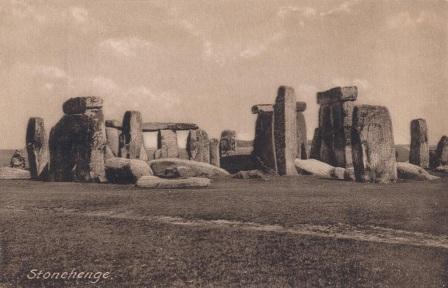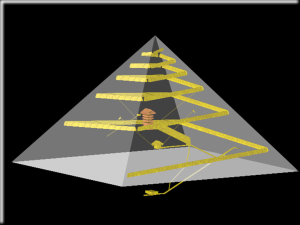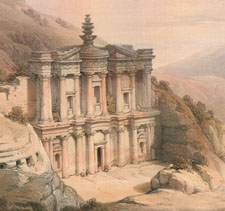Village to City
Village to City (2550 - 510 B.C.E.)
In the history of project management this period was dominated by the very early civilizations that were farming.
“The city is almost the most defining characteristic of civilization. [1].”
High civilizations emerged in land between rivers in both China and Mesopotamia (Tigris-Euphrates rivers). With civilizations came the early projects and these were driven by a “temple economy” (grain silos held in religious structures) where the ruler initiated communal work projects as the head of administrative and religious activities. These were typically construction projects using stone, and new emerging materials like bricks, using metal tools like bronze, copper, and later iron.
This period covers ancient wonders and structures like the pyramids, buildings, and towers including two of the Seven Wonders of the Ancient World. The list is very subjective as few of these wonders (the project output or deliverables) remain today, and details about the projects are scant and only now coming to light through archaeology. The most astonishing fact about these projects is the scale of the deliverable (the construct itself) considering the main resource available was human capital.
|
Giza Pyramid, 2580-2560 BCEgyptian Project Management had over 200 years of experience with pyramid building which saw a clear evolution in learning. The approach was based on trial and error, or prototyping. This is exemplified by the Bent Pyramid at DAHSHUR, clearly experimental, with two different slope gradients for the sides at the lower and upper levels. This experience gave the Ancient Egyptians the confidence to take on a project size of the Giza Pyramid. With a clear project charter and a deadline to deliver the project before the Pharaoh died (approximately 20 years), the nephew and Prime Minister was elected the project manager. The technical challenges were enormous, from creating a perfectly level and square base, to building the burial chambers, to completing the last third and mounting the cap stone. There are a number of construction method theories that speculate how the pyramid was probably built, in terms of the approach in getting the blocks to site, and the project workforce. Initially it was estimated that the project workforce required 100,000 slave workers for 20 years. |
|
|
|
More recent evidence suggests it was a paid workforce working on the project when the Nile river was flooded and agricultural activity suspended. The workers were devoted and committed to the project coming from a population of 1.6 million. The workforce was supported by a project infrastructure with accounting and management skills, and a massive supply chain of food, materials and tools. At Giza the project workforce was divided into crews of approximately 2,000 and then sub-divided into named gangs of 1,000:
Another significant factor that reduced the need for a large project workforce was the internal ramp. Jean-Pierre Houdin used the computer modeling of the Giza Pyramid to establish the theory, now gaining wide acceptance in the archeological community. A smaller estimated workforce of 20,000 workers could be separated into efficient, easily monitored units and a seemingly impossible project, the raising of a huge pyramid, became an achievable ambition. Quality control was introduced at a local level where very simple plomb tools (A and F frame plombs) gave near perfect horizontal and vertical surfaces. These surfaces were very carefully trimmed so that the blocks world fit perfectly to ensure that the pyramid remained perfectly symmetrical. The Egyptians had such a comprehensive grasp of the whole project, Work Breakdown Structure and schedule, that at the project start they sent teams 800 kilometers (500 miles) to Aswan to quarry granite. They knew it would take 10 years to hack out the granite beams needed for the roof of the burial chamber of the kings that were up to 62 tons and had to carry the weight of the pyramid. The quarrying was scheduled accordingly to stay within timelines as they had calculated that within this 10 year span the pyramid would be 48 meters (150 feet) high and ready for the pharaoh’s burial chamber. Any higher and it would have been next to impossible to drag the beams up the ramp. The Great Pyramid of Giza reaches a height of 146 m (481 ft). |
|
The Hanging Gardens of BabylonHanging Gardens of Babylon, 604-562 BCwere constructed with massive walls 25 m (80 ft) thick that were stepped to form the terraces of a structure that was 122 m wide x 122 m long (400 x 400 ft) and 30 m (80 ft) high.
The garden was sloped like a hillside and thickly planted with trees of every kind, and hidden water machines supplied water from the river. |
 |
|
Stonehenge in England consists of an outer circle of 30 upright sacred "blue" stones, 4.1 m (13.5 ft), each weighing 25 tons were transported 438 km (300 mi). An inner circle of Standing Stones up to 7 m (22 ft) high, weighing up to 45 tons each, were moved about 25 miles using sledges and ropes as transportation by water would have been impossible.
Today's calculations show that it would have taken 500 men using leather ropes to pull one stone, with an extra 100 men needed to lay the huge rollers in front of the sledge.
Also worthy of an important mention are the following projects where a high level of precision was involved, not just in the construction but the positioning itself, for example, Stonehenge was a huge calendar and the stones had to line up precisely with celestial events. |
 |
|
Petra, the rock-carved city in Jordan, 6th century B.C.E. The rock-carved city in the foothills of modern Jordan, from the 6th century B.C.E. was built by the Nabataeans. Petra's engineers created a sophisticated system of clay pipes that brought water into the city for a population of 30,000. The engineers created tunnels and channels to prevent floods from destroying the buildings.
|
|




